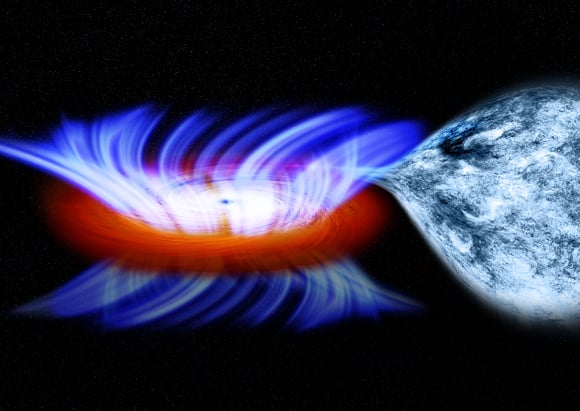This article is more than 1 year old
NASA sniffs little black hole's 20-million-MPH wind
Flatulent fallen star farts supermassive-grade hurricane
NASA's Chandra X-ray Observatory has caught a whiff of the fastest ever wind blowing from the gases around a stellar-mass black hole.

Illustration of high-speed winds from the stellar-mass black hole. Credit: NASA/CXC/M.Weiss
The wind, which is moving at an awesome 20 million miles per hour, is nearly ten times faster than what's been previously detected from a hole of this size, and a space hurricane of this magnitude is more usually found blowing around a supermassive black hole.
Stellar-mass black holes are created by the collapse of pretty huge stars and typically weigh between five and ten times the mass of our sun. But supermassive holes are millions or billions of times bigger.
"This is like the cosmic equivalent of winds from a category-five hurricane," said Ashley King of the University of Michigan, lead author of the study. "We weren't expecting to see such powerful winds from a black hole like this."
Black holes like this one, catchily called IGR J17091-3624, pull in material from a companion star to form a disk of hot gas around it, and the wind is driven off this disk in all directions.
The high-speed wind blowing around this black hole is also carrying away more debris than the hole is sucking in.
"Contrary to the popular perception of black holes pulling in all of the material that gets close, we estimate up to 95 percent of the matter in the disk around IGR J17091-3624 is expelled by the wind," King said.
IGR J17091-3624 is found in the bulge of the Milky Way galaxy, about 28,000 light years away from Earth.
The research on the observations from Chandra and the National Radio Astronomy Observatory's Expanded Very Large Array was published in the 20 February issue of The Astrophysical Journal Letters. ®
